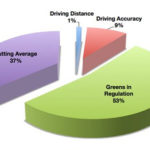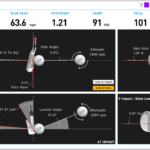Benefits of Slow Motion Practice
by: B. J. Hathaway
Ben Hogan was noted for using slow motion swings as part of his practice routine evidenced by a video demonstration he did on a beach while visiting a friend in Florida. Martial arts and other sports along with musicians and mathematicians have long used this form of training, but why would the average golfer want to do the opposite of what seems natural in practice?
1. The normal golf swing is too fast for the conscious mind to control when learning or changing a swing. Consider that an amateur downswing is about .3 seconds in duration and by the time a thought impulse is run to a muscle the ball has already been struck.
2. Slowing down gives your conscious mind time to process more information. When learning something new the mind must be constantly aware, monitoring and producing movements that are unfamiliar or strange feeling. If a normal swing moves the club at 90 mph, by using a 10 mph swing the student has 9 times longer to monitor, learn and correct the fine points of the movements.
3. Movement can be transformed into feels when moving slowly. Attempting to do anything new at top speed does not allow enough time for the feel to be monitored accurately or to make corrections and in most cases at near max speed what we feel is not remotely close to reality.
4. Moving slower allows the memorization of movements. Those bad swing habits are all run from a program deep in your memory that has become automatic and is also “write-protected”. In order to create an override we must move slowly and methodically in order to literally memorize every movement within the space around our bodies. Trying to change a golf swing at full speed is like remembering a new phone number. It’s only in short term memory and we all know how quickly that fades. Until the new moves are memorized you don’t own them, you are just renting.
If you can’t do it slow, don’t ever expect to be able to do it fast.










